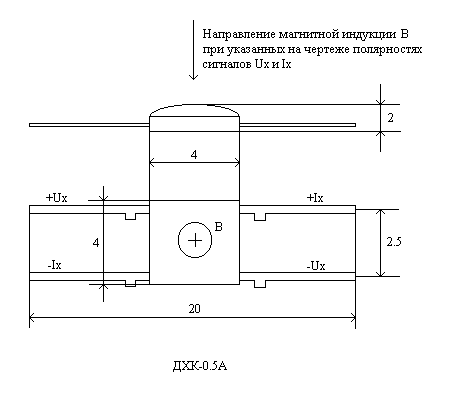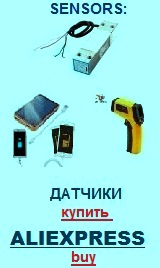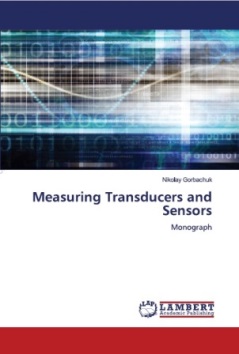Transducers, gauges, sensors - Information portal © 2011 - 2025 Use of material is possible by placing an active link


From the history of the creation and use of Hall sensors
Sensors are a hall - effect
To comparatively recent time the effect of Hall was used only for the study of electric properties of matters. With opening of elementary semiconductors and semiconductor connections, such, as, for example, Gе, НgSе, InSb, НgТе, InАs, possessing large by mobility of transmitters current - electrons or holes, this effect found the row of essential applications for the row of devices.
The staple of any the so-called sensor of hall - effect (Hall) serves as of these devices. He is a small on a size semiconductor plate of rectangular form with soldered to her by four wire electrodes from which two current, and two halls. This type of sensor got the name of crystalline. There are also pellicle sensors. On a thin isolating plate, for example mica, the skim of semiconductor matter is laid on, usually by the method of evaporation in a vacuum. Similarly as well as in the previous case, wire conclusions contact with a semiconductor.
There are the first types of crystalline and pellicle sensors in Soviet Union, and also some devices on their basis were worked out in Institute of semiconductors АН the USSR of V. N. Bogomolovum, V. P. Guze, А. Regelem and О. D. Elpatevskoy.
а) Magnetometer. We will begin consideration of devices with the measuring device of the magnetic fields, called magnetometers which consist of sensor of hall - effect and potentiometer.
Halls of difference potentials is proportional to tension of magnetic-field, she can be measured through a semiconductor plate, placed in the magnetic field. For measuring of the magnetic fields in thin gaps it is better to take advantage of not semiconductor plate, and thin tape.
A sensor is a hall - effect (fig. 1) consists of thin mica substrate of rectangular form, on which
the layer of semiconductor is inflicted, possessing corresponding by electric parameters. On this layer four metallic electrodes are inflicted, from which two - current. Other pair of electrodes is intended for the removal of halls difference of potentials. To the electrodes thin explorers are tricked into. A plate with a semiconductor layer can have a thickness from 10 to 100 mkm. Wires from the halls electrodes of sensor go to the portable potentiometer. The sensitiveness of sensor hesitates within the limits of 20-100 mkV/oersted.
Without inertance hall - effect enables through a sensor to measure the variable magnetic fields to frequencies in 10^12 hertzs. Sensors can be very small sizes, that allows to apply them for research of the field topography.
In principle it is possible to measure similar sensors both very small (Н =10^-5 oersted) and the very large (Н = 10^5 oersted) fields. Regulation of strength of current, current through a semiconductor layer, is arrive at the different sensitiveness of sensor. The last is determined practically by the level of noises. Therefore in pellicle sensors the reliable enough measuring it is expedient to conduct in the fields from a 1 oersted and higher.
Device with a sensor hall - effect use and for measuring of tension of permanent magnetic-field. Such magnetometer - only one of variants of device, intended for the magnetic measuring. These measuring is conducted far not in identical terms. Therefore a magnetometer for the study of transients in electric machines must be differently constructed, what the same device for researches, it admits, curves of magnetizing of magnetic materials and т. of д. terms, produced to material of sensor, are Just different. They to a great extent depend on aims which the measuring device of the magnetic fields targets at.
The use of effect of Hall for the needs of practice goes out far outside one only measuring of the magnetic fields. Sensors are a hall - effect, by conformable character structurally executed, at which instead of semiconductor tape poly - or single-crystal semiconductor plate is placed, can decide different technical tasks.
Fig.1. Original appearance of pellicle sensor is Hall - effect
Modern sensor on the basis of effect of Hall.
The sensors of Hall are produced by many companies in the world, for example, by a company Honeywell. In Russia it is most simply possible to purchase the sensor of ДХК-0.5А.
The sensor of Hall ДХК-0.5А is intended for measuring of size of magnetic induction on the basis of transformation of magnetic induction to output tension. A sensor is executed on the basis of co-planar topological structure, formed on the surface of silicic crystal.
Basic technical descriptions:
Nominal managing current - 3 мА;
Tension of Hall at magnetic induction 0.25 Т and nominal managing current - 70 mV (sensitiveness of K = 280 mV/Т);
Remaining tension at a nominal managing current - no more than 7 mV (the value of this parameter depends on the terms of delivery);
Entrance resistance - 1.8 .. 3 kOhm (resistance between the conclusions of Iх);
Output resistance - no more than 3 kOhm (resistance between the conclusions of Uх);
Mass - 2.5 no more than
- - Iх and +Iх are conclusions for connecting of source of managing current (current conclusions);
-- Uх and +Uх are conclusions of output signal (halls conclusions);
resistance less than, than between холловскими between current conclusions.
Output tension is in мВ:
++Uх - (- Uх) = K · (Iх / 3) · B,
where
Iх is a value of managing current in mА,
K is a sensitiveness in мВ/Т (about 280 mV/Т),
B is a size of magnetic induction in Т.
A sensor of ДХК-0.5А is sensible to the sign both in relation to direction of magnetic induction and in relation to polarity of managing current.
See also:
русский / english
Home >> Magnetic field >> Sensors are a hall - effect
• Information about various converters and sensors of physical quantities, parameters of various physical processes is presented.
• Electrophysical properties and effects in various electrical materials.
• Theory, experimental results, practical application
Home >> Magnetic field >> Sensors are a hall - effect

See also:
CONVERTERS, GAUGES, SENSORS
Information, news, advertising


